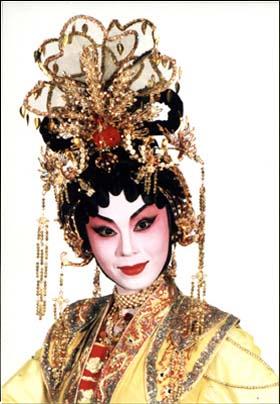Characteristics of Cantonese Opera
2009-06-25 21:34 BJT
Cantonese opera has much in common with other Chinese theatre genres. Commentators often take pride in the idea that all Chinese theatre styles are but minor variations on a pan-Chinese music-theater tradition, and that the basic features or principles are consistent from one local performance form to another. Thus, music, singing, martial arts, acrobatics and acting all feature. Most of the plots are based on Chinese history and famous Chinese classics and myths. The culture and philosophies of the Chinese people can be seen in the plays. Virtues like loyalty, moral, love, patriotism and faithfulness are often reflected by the operas.
 |
Some particular features of Cantonese opera are:
1. Chihng sik sin: formulaic, formalised
2. Heui yih sing: abstraction of reality, distancing from reality
3. Sin mihng sing: clear-cut, distinct, unambiguous, well-defined
4. Jung hahp ngaih seuht yihngsik: a composite or synthetic art form
5. Sei gung ng faat: the four skills and the five methods, a simple codification of the basic skills and techniques of acting and singing.
The "four skills" and "five methods" are a simple codification of the areas of special training for theatre performers, and also stand as something of a metaphor for the most well-rounded and thoroughly trained performers. The "four skills" apply to the whole spectrum of vocal and dramatic training: singing, acting and movement, delivery of the "speech-types" and martial and "gymnastic skills," while the five methods are categories of techniques associated with specific body parts: hands, eyes, body, hair, feet or walking techniques.
Editor: Zhao Yanchen | Source: CCTV.com
 Mail
Mail Share
Share Print
Print


 Video
Video









 2009 China Central Television. All Rights Reserved
2009 China Central Television. All Rights Reserved